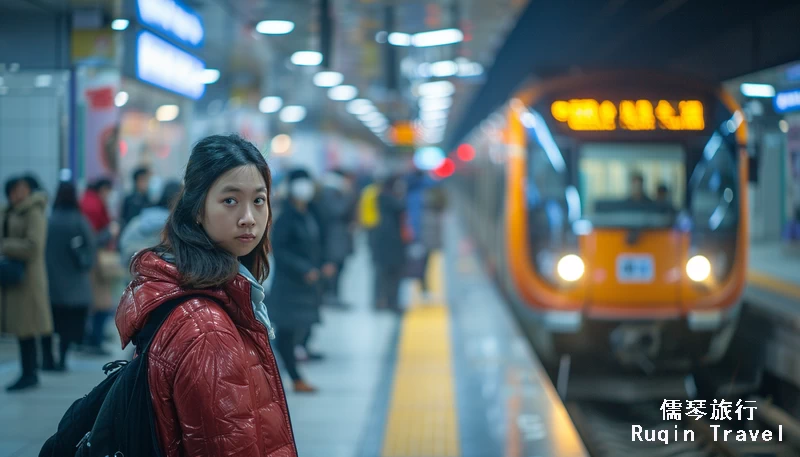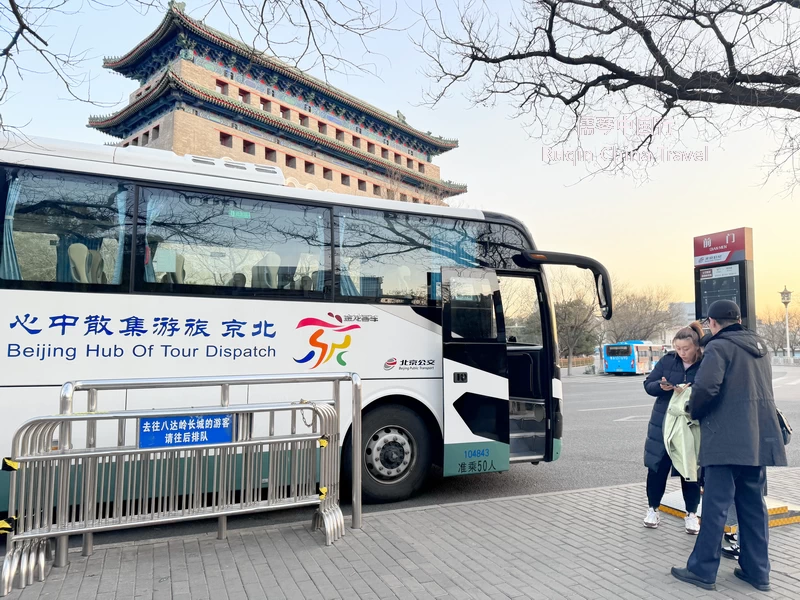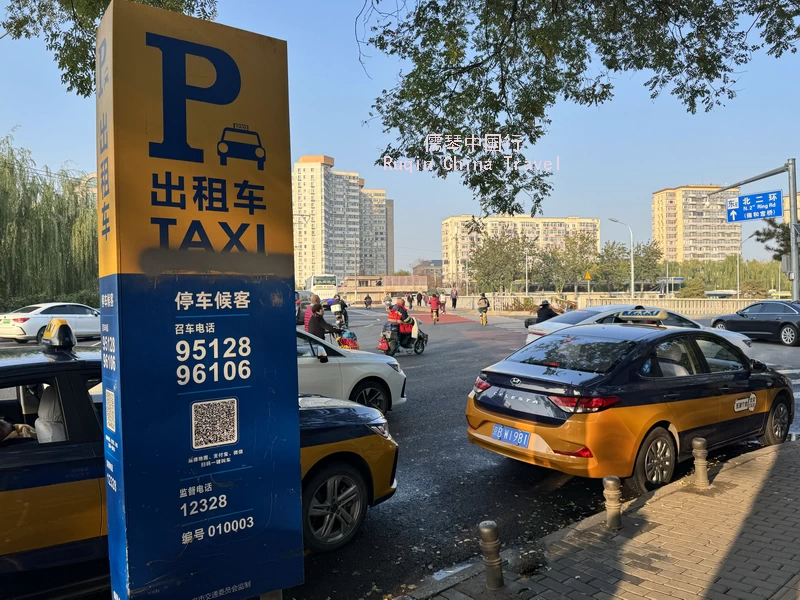When visiting China, one of the best ways to explore its bustling cities is by using the public transport in China. The country’s extensive network of subways, buses, and trains is not only efficient but also cost-effective.
However, navigating Chinese public transport can be daunting for foreigners. In this guide, we’ll cover everything you need to know about how to use public transport in China. From understanding subway systems to bus routes, we’ll provide practical tips and essential information to make your journey smooth and enjoyable.
1. Guide to Taking Subways in China
China has an extensive metro network, covering both major and mid-sized cities. Cities like Beijing, Shanghai, Guangzhou, and Shenzhen have well-developed subway systems, while many second-tier cities—including Tianjin, Chongqing, Wuhan, Hangzhou and Nanjing—also have efficient metro networks. By 2025, a total of 45 cities across mainland China.

Metro Lines & Mileage
Take Beijing Metro as an example. As of January 2025, it operates 29 lines, spanning 879 km with 522 stations, including 99 transfer stations. By the end of 2025, Beijing’s metro network will expand to 30 lines, stretching 1,177 km—creating one of the world’s most extensive urban transit systems.
China’s metro systems continue to grow rapidly, improving urban mobility and making public transport more convenient than ever! The subways are fast, reliable, and cover extensive areas, making them ideal for tourists. Firstly, it’s important to note that most subway stations have signs and maps in both Chinese and English. This makes it easier for foreigners to navigate.
China Subway Guide
To start, familiarize yourself with the subway lines in the city you’re visiting. Each line is color-coded and numbered, which helps in identifying routes. For instance, the Beijing Subway has 25 lines, while Shanghai’s Metro boasts 19 lines. Check out: How to Use Subway in Beijing.
To navigate, check the station maps displayed in each train and platform. Always pay attention to the last train times, as they vary between lines and cities. Missing the last train can leave you stranded, especially late at night.
How to Buy Subway Tickets in China
Buying subway tickets in China is relatively simple. Most stations have vending machines with English language options. You can select your destination, pay the fare, and receive a paper ticket or a token.
Another convenient option is using transportation apps like (Subway Apps) Alipay or WeChat Pay. These apps offer digital ticketing, and generate QR codes to scan and enter, making it easier to buy and manage your tickets.
For a hassle-free experience, purchase a transportation card (sucg as Beijing Pass for Foreigners) . You can load money onto the card and tap it at the gates for quick entry and exit. This option is especially useful if you plan to use the subway frequently.
2. Guide to Taking Public Buses in China
The bus system in China complements the subway, offering routes that cover areas not accessible by train. Buses are a great way to explore smaller neighborhoods and tourist spots. However, understanding the bus system can be challenging, especially since most routes are in Chinese.

How to Take a Bus in China
1) Find Your Route
Use a mobile app (like Baidu Maps, Gaode Maps, or WeChat) or check online to find the best bus route and departure times. Many apps offer real-time bus tracking, making planning even easier.
2) Buying a Ticket
- Cash Payment: Some buses require exact change—prepare coins or small bills and drop them into the fare box when boarding.
- Public Transport Card: Get a rechargeable transit card (such as Beijinng Pass ) from a local bus company service center. Just tap the card when you board.
- Mobile Payment: Many cities allow Alipay or WeChat Pay for quick QR code scanning. However, not all buses have this feature, so it’s best to check in advance.
3) Riding the Bus
- Follow local rules: Stay quiet, avoid blocking doors, and don’t distract the driver.
- Be mindful of safety: Hold onto handrails, especially when the bus is moving.
- Exit in order: When your stop approaches, prepare to get off and avoid pushing.
Tips for Foreign Travelers Using Public Buses
1) Have Small Bills or a Transit Card
Not all buses accept mobile payments or give change, so carrying small bills or a transit card is the safest option.
2) Learn Basic Bus Etiquette
- Follow local public transport rules.
- Offer your seat to elderly passengers, pregnant women, or people with disabilities.
3) Use a Translation Tool or Ask for Help
If you’re unsure about stop names or routes, use a translation app or politely ask the driver or other passengers. Many people are happy to help!
4) Stay Safe
- Watch for moving buses before getting on or off.
- Hold onto handrails to avoid falling if the bus brakes suddenly.
5. Take Advantage of Technology
Download a bus tracking app to check arrival times and real-time locations. This will make your journey smoother and more predictable.
Taking a bus in China is simple and convenient once you get the hang of it. Just check your route in advance, have the right payment method, follow local etiquette, and stay safe. Using translation apps and bus-tracking tools can also greatly enhance your experience. Happy travels!
3. Guide to Taking Taxis in China
Taxis in China are affordable, convenient, and widely available. Whether you’re hailing a cab on the street or using a ride-hailing app, getting around is easy once you know the basics. Here’s a simple guide to help you navigate China’s taxi system like a pro.

Taxis in China: What to Expect
Types of Taxis
China offers different types of taxis to suit various needs, including:
- Standard taxis – The most common and affordable option.
- Luxury taxis – Higher-end vehicles for a more comfortable ride.
Taxi Fares
Taxi fares are reasonably priced. For most cities, a 10 km (6-mile) ride costs under ¥30 RMB ($4 USD). Prices vary by city, but overall, taxis remain an affordable way to travel.
How to Take a Taxi in China
1. Hailing a Taxi
- Street Hailing – Simply wave at an empty taxi (look for the green light on the dashboard).
- Ride-Hailing Apps – Apps like DiDi (滴滴), Gaode (高德), and Baidu make booking a taxi easier, especially if you don’t speak Chinese. DiDi is the most widely used and has an English version.
How to Pay for a Taxi
- Cash – Pay in RMB (Chinese yuan). Keep small bills handy, as drivers may not have change for large notes.
- Mobile Payments – Most taxis accept WeChat Pay or Alipay, making transactions quick and easy.
Important Taxi Tips for Foreigners
1) Check the Vehicle
Before getting in, confirm the taxi’s license plate, color, and logo to ensure it’s a registered taxi. Avoid unlicensed cars offering rides.
2) Buckle Up
For your safety, always wear a seatbelt, even if the driver doesn’t mention it.
3) Communicate Clearly
If your destination is hard to find, show the driver the Chinese name and address on your phone. You can also use a translation app to avoid misunderstandings.
4) Keep Your Belongings Safe
Hold onto your phone, wallet, and bags while riding to prevent losing them or leaving them behind.
Extra Tips for Using Ride-Hailing Apps
- Pin Your Location Accurately – Make sure the app shows your exact pickup point to avoid confusion.
- Verify Trip Details – Double-check the car model, plate number, and driver details before getting in.
- Pay Promptly – After the ride, complete the payment immediately to avoid late fees or issues with your account.
Taking a taxi in China is straightforward and hassle-free, especially with the help of ride-hailing apps. Just remember to check the vehicle, choose your payment method, stay safe, and use translation tools when needed. With these tips, you’ll be navigating China’s taxis like a local in no time!
4. Train Travel in China
Traveling by train in China is fast, efficient, and convenient. Whether you’re taking a high-speed train (高铁) or a regular train, understanding the basics will help make your journey smoother. Here’s everything you need to know!

Overview of China’s Train System
1) High-Speed Rail (高铁)
China’s high-speed rail (HSR) is famous for its speed, efficiency, and excellent service. It connects major cities and key regional hubs, making it one of the best ways to travel long distances. The extensive network allows you to move across the country quickly and comfortably.
2) Regular Trains (普通火车)
In addition to high-speed trains, China has regular trains, including:
- Express trains (特快, 直快) – Faster and more comfortable than regular services.
- Slow trains (普快) – Cheaper but take longer, great for budget travelers with flexible schedules.
If time isn’t a concern and you want to save money, regular trains can be a good option.
How Foreigners Can Buy Train Tickets in China
1) Buying Tickets In-Person
Go to a train station ticket window with your passport. Tell the staff your destination, travel date, and train preference, then pay for your ticket in cash or via mobile payment.
2) Buying Tickets Online
For a faster and more convenient option, book tickets through the official 12306 website (www.12306.cn) or the 12306 app (English version available).
- Register an account and verify your passport and nationality.
- Choose your train, seat, and departure time.
- Pay using Alipay, WeChat Pay, or a Chinese bank card.
Booking online is recommended, especially for high-speed trains, as tickets sell out quickly.
Boarding Your Train
Once you’ve bought your ticket, follow these simple steps to board:
- Bring your passport and train ticket (or e-ticket).
- Arrive at the station 30–60 minutes early to pass security checks.
- Follow the station signs to find your waiting area, ticket gate, and platform.
- Scan your ticket (or passport for e-tickets) at the automatic gates and board your train.
High-speed rail stations are modern and well-marked, so navigation is easy.
Important Travel Tips
1) Plan Ahead
Check your train schedule, departure station, and boarding time in advance to avoid missing your train.
2) Carry Your Passport
You must bring the passport used for booking, as train staff may check it before boarding.
3) Security Checks
Expect airport-style security screening before entering the station. Avoid packing prohibited items like knives, flammable liquids, or large lithium batteries.
4) Follow Train Etiquette
- Keep noise levels low.
- Dispose of trash properly.
- Follow station rules and respect other passengers.
5) Keep Your Belongings Safe
Always watch your bags and keep valuables close, especially on overnight or busy trains.
Taking a train in China—whether a high-speed rail or a regular train—is incredibly convenient. As long as you book your ticket in advance, carry your passport, follow station rules, and stay aware of your belongings, you’ll have a smooth and enjoyable journey. Enjoy your travels!
5. Best Apps for Public Transport in China
If you’re traveling to China, these apps will make your journey smooth and stress-free!

💰 Payments – Alipay (支付宝)
China is a cashless society, and Alipay is the go-to app for payments. Almost every store, restaurant, and even street vendor has an Alipay QR code. Simply scan it to pay!
🔹 Tip: Download and register Alipay before your trip, then link your Visa/Mastercard debit or credit card for seamless transactions.
🚄 Train Travel – 12306
For high-speed trains and regular rail travel, 12306 is the official app to book tickets.
🔹 Tip: Tickets go on sale 15 days in advance, so don’t book too early! You’ll need your passport for registration, and it’s best to buy directly from 12306 to avoid extra fees from third-party platforms.
🚖 Ride-Hailing – DiDi (滴滴出行)
China’s version of Uber or Grab, DiDi is the easiest way to get a taxi.
- If you have a Chinese phone number, download the DiDi app and register.
- If you don’t have a Chinese SIM, you can still use DiDi via the Alipay mini-program, which charges directly through your linked card.
🔹 Tip: No Chinese number? No problem! Just use Alipay’s DiDi function—it works just as well.
🍱 Food Delivery – Meituan (美团) / Ele.me (饿了么)
China has two major food delivery apps:
- Meituan and Ele.me offer a huge range of restaurants, from street food to fine dining.
- If you don’t have a Chinese number, you can still order through Ele.me via Alipay, though options may be slightly limited.
🔹 Tip: Expect fast delivery—sometimes within 30 minutes!
🏠 Accommodation – Ctrip (携程) / Trip.com
Ctrip and Trip.com are the same platform, but Ctrip is the Chinese version while Trip.com is for international users.
- Not all hotels in China accept foreigners. Trip.com only shows hotels that allow foreign guests, so it’s the safest option for booking.
- If using Ctrip, make sure to filter for “Foreign Guest Accommodation.”
🔹 Tip: Prices are generally similar on both versions, but compare for the best deal!
🗺️ Navigation – Amap (高德地图)
Forget Google Maps—it doesn’t work well in China. Instead, use Amap (Gaode Ditu), which offers super accurate real-time navigation for walking, cycling, and driving.
🔹 Tip: Amap provides 2D and 3D walking navigation, and its GPS updates instantly to match your direction—perfect for exploring on foot!
By using these essential apps, you’ll navigate China like a pro. Have a great trip!
6. General Public Transport Etiquette in China
Using public transport in China? Follow these simple etiquette tips to ensure a smooth and respectful journey.
Line Up & Board in Order
- Always queue when boarding buses, subways, or trains—no cutting in line.
- Follow the “let passengers exit first” rule, especially at subway stations and train platforms.
- Some metro stations have priority waiting areas for seniors, pregnant women, and people with disabilities. If you’re not in these groups, give them space.
🤫 Be Considerate to Others
- No eating or drinking on the subway (some cities strictly prohibit it).
- Keep phone calls short and quiet, and always use headphones—no blasting music or videos.
- If you see an elderly person, a pregnant woman, or someone with a baby, offer your seat—it’s a common courtesy.
🎒 Mind Your Belongings
- No hazardous items like flammable sprays, knives, or other restricted objects on metros and trains. Some cities also have limits on carrying liquids.
- If you have a large suitcase or backpack, keep it in designated areas or at your feet to avoid blocking aisles.
By following these simple rules, you’ll blend in with local commuters and enjoy a more comfortable ride. Happy travels! 🚄🚇🚖
7. Safety Tips for Using Public Transport in China
Safety should always be a priority when using Chinese public transport. China is generally safe, but it’s wise to stay vigilant. Firstly, keep an eye on your belongings, especially in crowded areas. Pickpocketing can occur, particularly in busy subway stations and buses. Secondly, avoid carrying large amounts of cash. Use digital payment methods whenever possible.
Additionally, be aware of your surroundings. If you feel uncomfortable or notice suspicious activity, move to a different area or alert a transit officer. Lastly, follow the local rules and guidelines, such as not leaning on doors or blocking the aisles.
8. China Public Transport Payment Options
In China, you have several options for paying public transport fares. The most common are cash, transportation cards, and mobile payment apps. Cash is widely accepted, but having exact change is often required. Transportation cards, like the Beijing Transportation Smart Card, are convenient and offer discounts.
You can load money onto these cards at subway stations and convenience stores. Mobile payment apps like Alipay and WeChat Pay are increasingly popular. They offer a seamless and cashless way to pay for subway tickets, bus fares, and even taxis.
9. Differences in Public Transport in Chinese Cities
Public transportation varies across Chinese cities. In Beijing, the subway system is extensive, with many lines reaching the city’s outskirts. Shanghai’s metro is modern and well-connected, making it easy for foreigners to navigate. Guangzhou offers a mix of subways and buses, with some routes offering English translations.
Shenzhen’s public transport is known for its high-tech features, including cashless payment systems. Chengdu, famous for its pandas, has a relatively new but efficient subway system. Each city offers unique public transport experiences, so it’s worth researching your destination in advance.
Beijing Subway Guide
Beijing’s subway system is one of the busiest in the world. It has 25 lines covering most of the city, including major tourist attractions like the Forbidden City and the Great Wall. The subway operates from early morning until late at night.
Tickets can be purchased at vending machines or using a transportation card. The Beijing Subway also offers a day pass, which is ideal for tourists planning to visit multiple sites in one day. Maps and signs are available in English, making it easier for foreigners to navigate.
Shanghai Metro for Foreigners
Shanghai’s metro is a convenient way to explore the city. The system has 19 lines, covering key areas such as Pudong, Nanjing Road, and the Bund. The metro operates from early morning to midnight, with frequent trains during peak hours. Foreigners will find English signs and announcements, making navigation straightforward.
Tickets can be bought at machines or through mobile apps like Alipay. The Shanghai Public Transportation Card is also a good option for frequent travelers. The card can be used on buses and ferries, offering a seamless travel experience.
Guangzhou Public Transportation Tips
Guangzhou’s public transport includes a well-connected subway and an extensive bus network. The subway has 14 lines, reaching major shopping districts and cultural sites. For those interested in the local food scene, the subway is a great way to explore the city’s famous dim sum restaurants.
Buses are also widely used, especially for reaching areas not covered by the subway. The Guangzhou Transportation Card is a convenient payment option. The card can be used on the subway, buses, and even taxis, offering a versatile travel solution.
Shenzhen Bus System Guide
Shenzhen’s bus system is modern and efficient. The city has numerous bus routes, covering key commercial and residential areas. Buses are a great way to explore Shenzhen’s tech hubs and shopping districts. Payment options include cash, transportation cards, and mobile apps. The Shenzhen Tong Card is a popular choice among locals and tourists. The card offers discounts on bus fares and can be used on the subway as well. Shenzhen’s buses are equipped with electronic screens displaying route information, making it easier for foreigners to navigate.
Chengdu Metro Map for Tourists
Chengdu’s metro system is relatively new but expanding rapidly. The metro currently has 10 lines, with plans for further expansion. It covers major attractions like the Chengdu Research Base of Giant Panda Breeding and Wuhou Shrine.
The metro is a convenient way to explore the city, especially during peak tourist seasons. Tickets can be bought at vending machines or using the Tianfu Tong Card. The card offers a convenient way to pay for metro fares and can also be used on buses. For tourists, the Chengdu Metro provides a quick and comfortable way to see the city’s highlights.
In conclusion, navigating public transport in China can be a rewarding experience for foreigners. With a bit of preparation and understanding, you’ll find it easy to explore the country’s vibrant cities. From the efficient subway systems in Beijing and Shanghai to the comprehensive bus networks in Guangzhou and Shenzhen, China offers a variety of public transport options. By following this guide and using the recommended apps and tips, you’ll be well-equipped to travel around China like a local. Safe travels!
🚄 7 Days Private Tour of Beijing, Xian, Shanghai by Bullet Train
Discover the best of China’s cultural and historical treasures on this classic 7-day private tour covering the iconic cities of Beijing, Xian, and Shanghai—known as China’s “Golden Triangle.” Specially designed for culture and history lovers, this journey takes you through ancient wonders, imperial landmarks, and dynamic modern skylines.
Travel seamlessly between cities aboard high-speed bullet trains, while enjoying the comfort of handpicked hotels and the insight of expert local guides.
🔗 Book Your China Golden Triangle Tour
✅ Tour Includes:
- 2nd-class bullet train tickets: Beijing → Xian → Shanghai
- 6 nights’ hotel accommodation with daily breakfast (twin share)
- Private transfers in air-conditioned vehicles with licensed driver
- Services of a professional English-speaking tour guide
- Entrance tickets to all listed attractions
More China Survival Guide
Prepare for smooth travels with the China Survival Guide, your go-to resource for practical advice on navigating daily life in China. From essential language tips and transportation know-how to safety guidelines and local etiquette.



